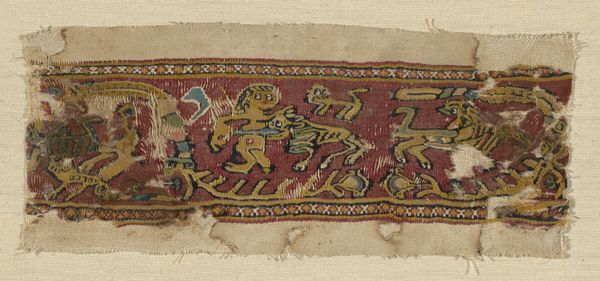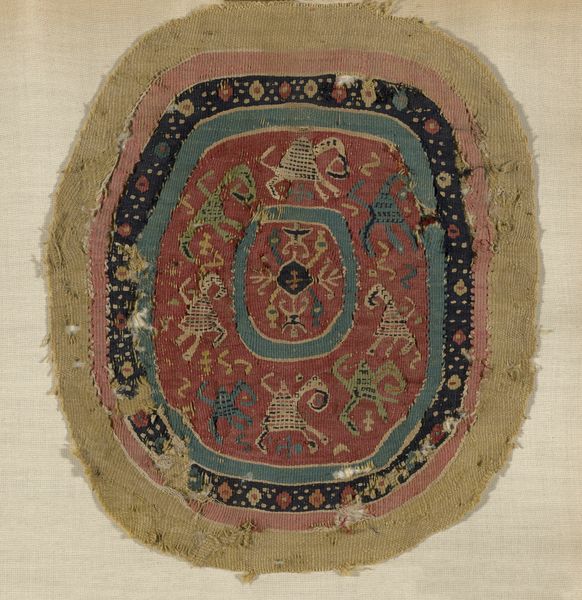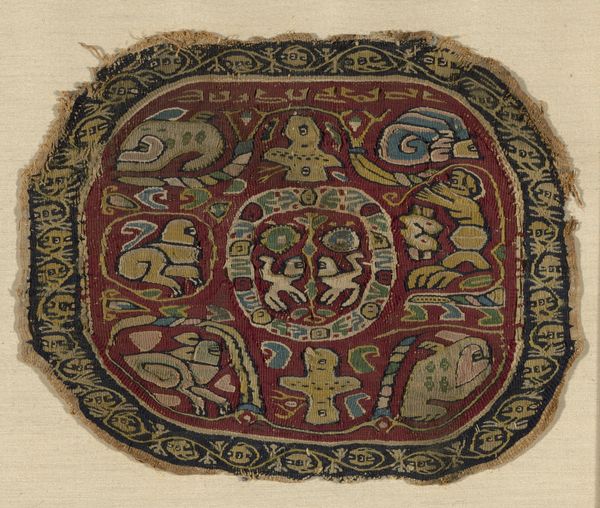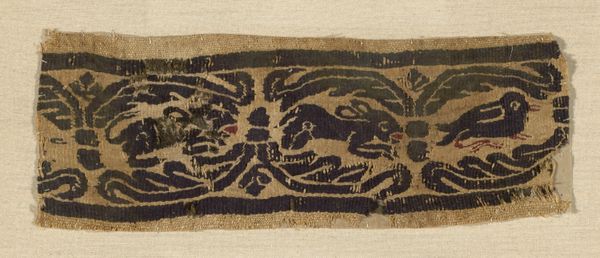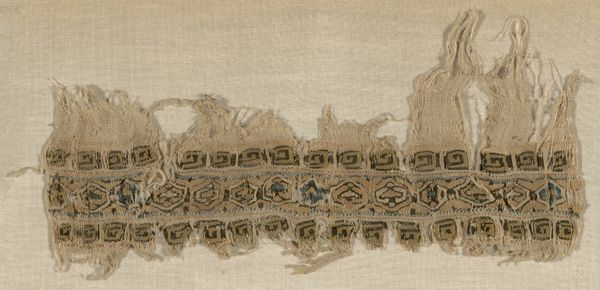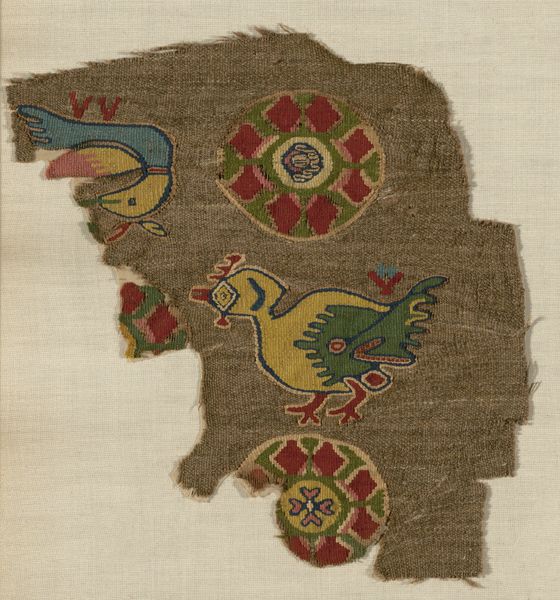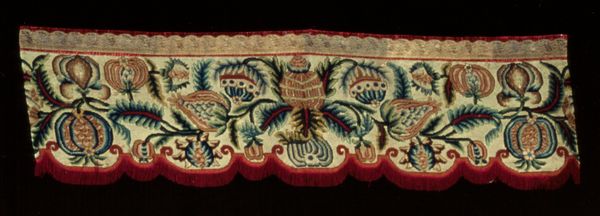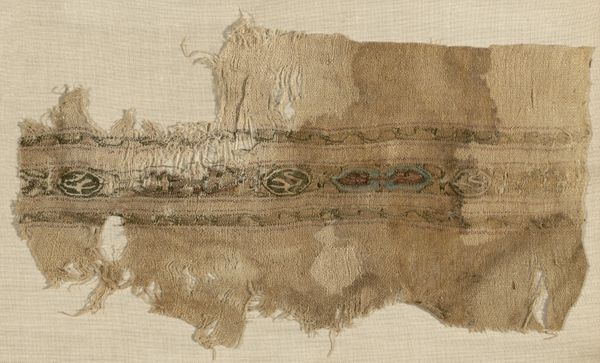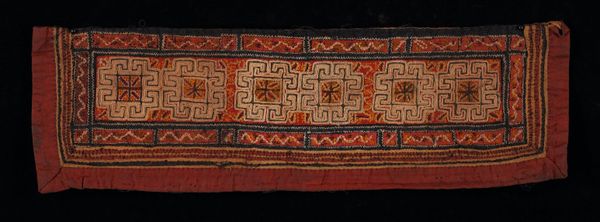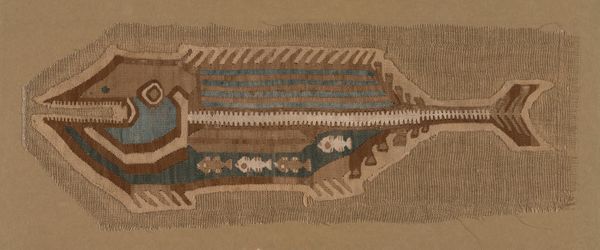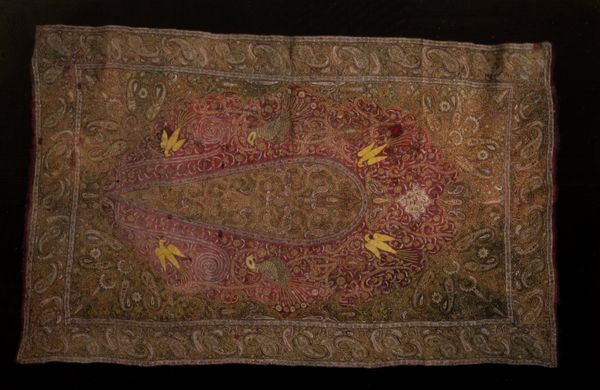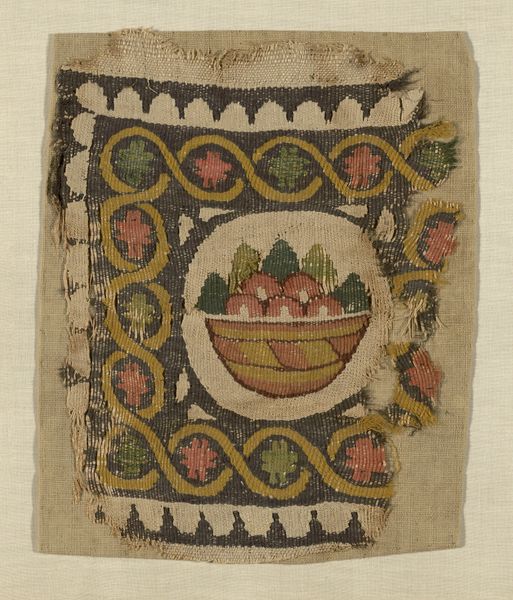
Fragment (Tunic Yoke) Roman period (30 B.C.– 641 A.D.)/Arab period (641–969), 6th/8th century
0:00
0:00
weaving, textile
#
weaving
#
textile
#
figuration
#
geometric
#
ancient-mediterranean
#
islamic-art
#
textile design
Dimensions: 26.7 × 14 cm (10 1/2 × 5 1/2 in.)
Copyright: Public Domain
This fragment of a tunic yoke was created by Coptic artisans, adorned with potent symbols woven into its very fabric. Across the expanse, you'll see the fleur-de-lis motif, echoing royal and religious authority. The canine figures, perhaps dogs or jackals, are a more ancient guardian spirit, linking back to funerary traditions in Egyptian art. Note how the Coptic artisans transformed this symbol, imbuing it with a new sense of protection, mirroring a universal desire for safety and continuity. These motifs persist, resurfacing in tapestries, heraldry, and even modern logos, each time slightly altered, yet carrying echoes of its origin. Consider how the repetition of these patterns and their symmetry could reflect the subconscious desire for order and balance, a way to manage anxieties about the unknown. Such symbols are not merely decorations; they tap into our collective memory. They engage viewers on a primal level, their emotional resonance enduring through the ages.
Comments
No comments
Be the first to comment and join the conversation on the ultimate creative platform.
